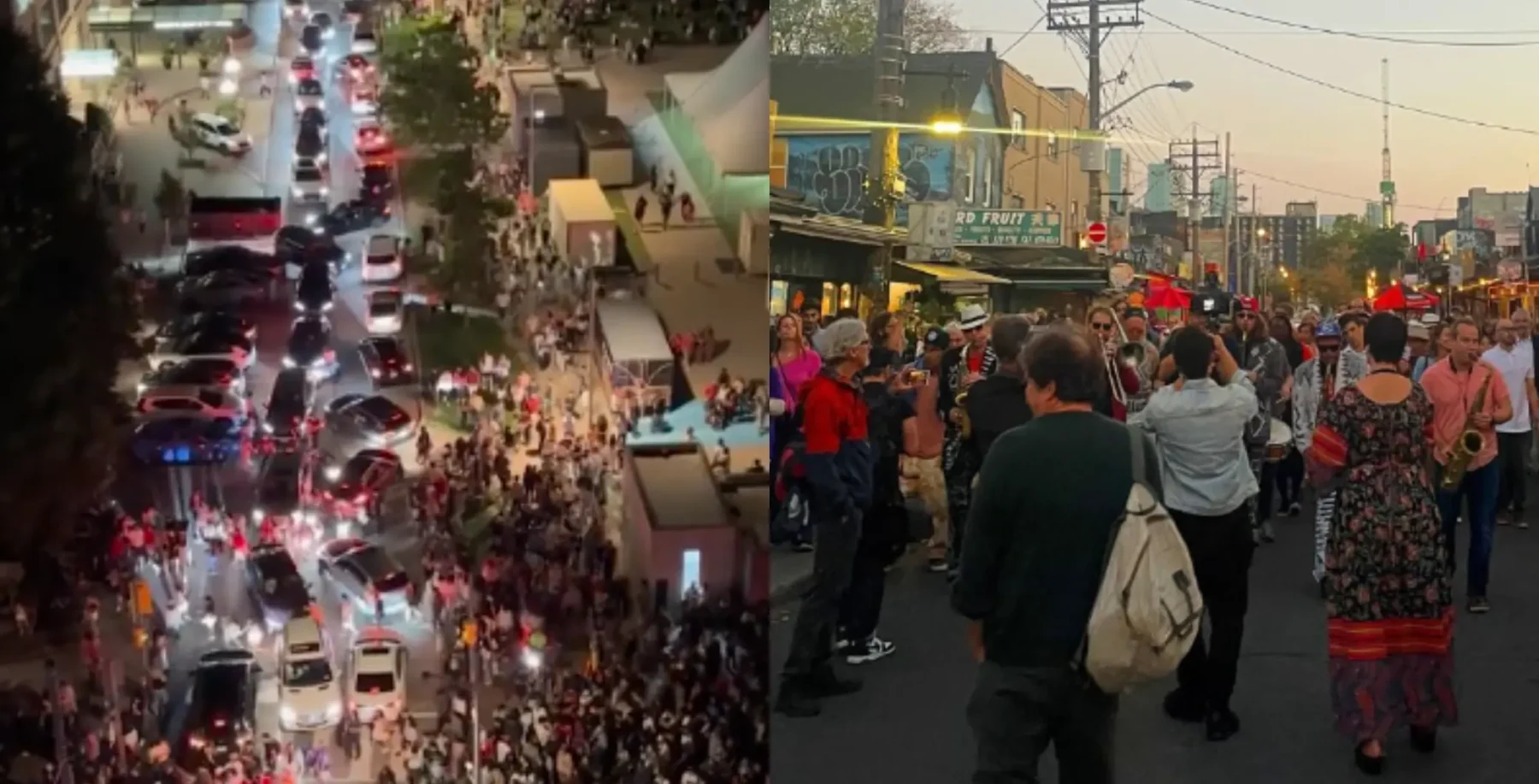
Rating: NNNNN
Is it really that crazy to want to walk home from the airport?
A relative tells me she once flew into Geneva, Switzerland, on a business trip. The night before, a major blizzard had closed all the roads (the city had just sold its little-used snowplows), and travellers had to walk into town from the airport.
Closer to home, passengers on the Air France flight that overshot the runway at Pearson back in August 2005 walked to the 401, where they were picked up by passing motorists.
While it wouldn’t be used much, you’d think there’d at least be a pedestrian route in, out and around the airport.
But without a car or a bus ticket, you’re a prisoner in a fortress surrounded by moats of speeding traffic.
The airport is impenetrable. The west side is blocked by the runways, and the other sides are tightly bound by impassable expressways.
Major airports are like this everywhere. Only the use of an energy-consuming engine car, bus or train will get you there and back.
It seems their designers find it inconceivable that anyone would want to walk to or from an airport which makes it the ultimate urban walking challenge.
And, on a perfect Saturday in May, that’s what inspires five members of local walking club the Toronto Psychogeography Society to walk into Toronto from Pearson.
In a slight breach of psychogeographic protocol, we are armed with a map, but fortunately it’s way out of date Terminal One and its surroundings have been completely reconfigured so using it preserves an appropriate degree of randomness.
The map suggests only two possible routes through the concrete maze of surrounding highways. One leads northeast to Dixon Road, but from there it’s miles of walking along suburban arterials before there’s any way to cross the 401 on foot.
The other route is a service road somewhere near Terminal One that heads south. An added incentive an aircraft viewing area is indicated on the map along the way. We decide to try to find this road.
We head directly through the main parking garage, which we figure will provide the most direct route out. So far so good, pedestrian-wise. It’s filled with signs indicating walkways, and even features a pedestrian signal, the first one I’ve ever seen indoors.
At the outer edge of the garage we find a stairwell leading down and out, the lack of urine smell indicating just how seldom it’s used.
We emerge onto a sidewalk that leads straight back to the terminal. On the other side of the road, a spectacular tangle of gleaming traffic ramps looms overhead, with pristine topsoil and grass beneath that has probably never been trod by a human foot. There’s no path, not even an informal one.
Nevertheless, we climb the grassy bank, negotiating a few ground-level roads (fortunately, traffic is light on a Saturday afternoon) until we find one that heads vaguely southward.
And then we make our great discovery: a whole section of ramps leading to the now-abandoned Terminal 2 that have been closed to traffic. That’s right a temporary car-free zone at the airport!
Giddily, we walk in the middle of multiple converging lanes, with nary a vehicle (or pedestrian) in sight, up to a bridge that affords us a view of the decrepit terminal. From this glorious height we spy the route we’ve been seeking.
The road ahead, however, makes no allowance for pedestrians. We walk along a narrow grass verge, squeezed against the sun-baked tanks of the jet fuel storage facility, whose toxic fumes almost overwhelm us. Past that, on a dirt shoulder beside the road, the roaring traffic of the 427 can be heard not far away.
After a while, as concrete barriers start to separate the shoulder from the road, odd signs start to appear warning, “Please do not feed the birds,” an unlikely concern given the lack of both birds and people.
When a plane roars directly overhead, we realize we’ve found the Aircraft Viewing Area, but cars are now discouraged from parking here by additional barriers closing off the entry point.
Perhaps officials fear that, under cover of making out, terrorists would spy on flights.
Later, when I call the Greater Toronto Airport Authority, they tell me there’s never been an official viewing area this spot was apparently selected by the mapmaker rather than the airport.
Finally we come to a cross street, and here, at the corner of International Boulevard and Silver Dart Drive, on the far western edge of the city, with no pedestrians and hardly a car in sight, is a pedestrian signal, complete with button.
It’s like the lamppost in Narnia, an unexpected and improbable outpost of urbanity.
We, of course, press the button, which must be the least used in the entire city of Toronto.
It’s a welcome sign that we’ve returned to pedestrian-conscious civilization.
**
Dylan Reid is an associate editor of Spacing Magazine












